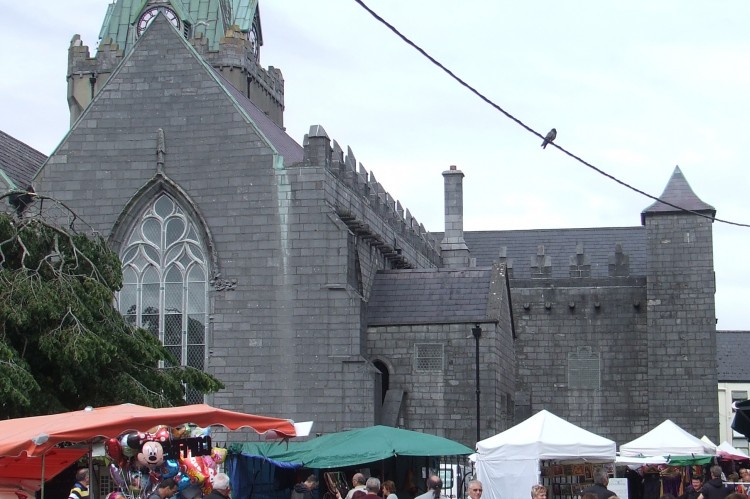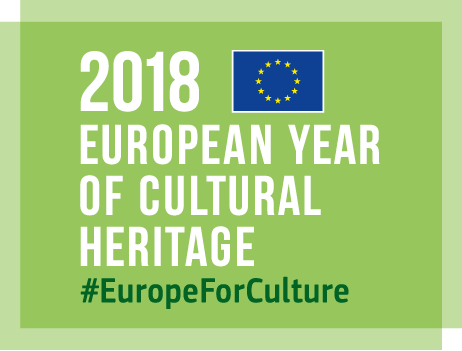Jul
15
2011
By Finn
2 min to read
Location
Ireland
53° 16' 20.8776" N, 9° 3' 14.7636" W
See map: Google Maps
IE
 The church of St Nicholas in Galway has a treasure trove of stories. It is linked however tenuously in some cases to the Knights Templars, Santa Claus, Christopher Columbus and Oliver Cromwell. It is also said to be the largest medieval parish church in Ireland still in use. Galway’s bustling market surrounds it on Saturday’s and local and international musical groups ranging from traditional to choral occasionally fill it with music. There are stone carvings of mermaids and gargoyles protect the vaulted south porch and throw water of the roof through their spout holes.
The church of St Nicholas in Galway has a treasure trove of stories. It is linked however tenuously in some cases to the Knights Templars, Santa Claus, Christopher Columbus and Oliver Cromwell. It is also said to be the largest medieval parish church in Ireland still in use. Galway’s bustling market surrounds it on Saturday’s and local and international musical groups ranging from traditional to choral occasionally fill it with music. There are stone carvings of mermaids and gargoyles protect the vaulted south porch and throw water of the roof through their spout holes.
The Church was built by the Lynch family, one of Galway’s tribes, in 1320. It was located on the site of an earlier church, some of the remains of which are incorporated into the south wall of the chancel.  The Knights Templars are believed to have had a smaller church close by which would have served the original Anglo Norman settlers. The dedication of the church is to St Nicholas of Myra a fourth century Asia minor Bishop best known today as the patron saint of children or Santa Claus, but during the middle ages he was more commonly revered as the patron saint of sailors (Santa Claus does usually make an appearance each year during the Cois Cladaigh Christmas concert). Galway’s maritime history is also reflected in the church’s association with Christopher Columbus who is said to have worshipped at the church in 1477. Galway reached the height of its prosperity in the 16th century and additions to the church such as the north and south aisles and the south transept were made while the riches flowed. Cromwellian forces are said to have stabled their horses in the church following a long siege in 1652.
The Knights Templars are believed to have had a smaller church close by which would have served the original Anglo Norman settlers. The dedication of the church is to St Nicholas of Myra a fourth century Asia minor Bishop best known today as the patron saint of children or Santa Claus, but during the middle ages he was more commonly revered as the patron saint of sailors (Santa Claus does usually make an appearance each year during the Cois Cladaigh Christmas concert). Galway’s maritime history is also reflected in the church’s association with Christopher Columbus who is said to have worshipped at the church in 1477. Galway reached the height of its prosperity in the 16th century and additions to the church such as the north and south aisles and the south transept were made while the riches flowed. Cromwellian forces are said to have stabled their horses in the church following a long siege in 1652.
 The Knights Templars are believed to have had a smaller church close by which would have served the original Anglo Norman settlers. The dedication of the church is to St Nicholas of Myra a fourth century Asia minor Bishop best known today as the patron saint of children or Santa Claus, but during the middle ages he was more commonly revered as the patron saint of sailors (Santa Claus does usually make an appearance each year during the Cois Cladaigh Christmas concert). Galway’s maritime history is also reflected in the church’s association with Christopher Columbus who is said to have worshipped at the church in 1477. Galway reached the height of its prosperity in the 16th century and additions to the church such as the north and south aisles and the south transept were made while the riches flowed. Cromwellian forces are said to have stabled their horses in the church following a long siege in 1652.
The Knights Templars are believed to have had a smaller church close by which would have served the original Anglo Norman settlers. The dedication of the church is to St Nicholas of Myra a fourth century Asia minor Bishop best known today as the patron saint of children or Santa Claus, but during the middle ages he was more commonly revered as the patron saint of sailors (Santa Claus does usually make an appearance each year during the Cois Cladaigh Christmas concert). Galway’s maritime history is also reflected in the church’s association with Christopher Columbus who is said to have worshipped at the church in 1477. Galway reached the height of its prosperity in the 16th century and additions to the church such as the north and south aisles and the south transept were made while the riches flowed. Cromwellian forces are said to have stabled their horses in the church following a long siege in 1652. Under the auspices of FAS a group led by Jim Higgins has planned and recorded all the inscribed memorial stones both inside and outside the church. Monuments of St Nicholas’ Collegiate Church, Galway: a historical, genealogical and archaeological record was written by Jim and published by Galway’s Crow’s Rock Press in 1992. It includes a fascinating introduction and is an exemplar of an academic level graveyard and memorial stone inscription survey.
Under the auspices of FAS a group led by Jim Higgins has planned and recorded all the inscribed memorial stones both inside and outside the church. Monuments of St Nicholas’ Collegiate Church, Galway: a historical, genealogical and archaeological record was written by Jim and published by Galway’s Crow’s Rock Press in 1992. It includes a fascinating introduction and is an exemplar of an academic level graveyard and memorial stone inscription survey. The earliest memorial stone recorded is located in the chapel of Christ within the church. It is a 13th century coffin shaped grave slab imbedded in the floor of the chapel. The inscription is in French and it is decorated with a double armed cross. It is known as the ‘Crusaders Tomb’ and it possibly came from the nearby Knights templar church which is said to have been destroyed in 1324.

 The southern or Lynch transept was extended by the Lynch family during the 16th century and contains a number of tombs associated with them. Two in particular stand out; a 15th/16th century altar or wall tomb is uninscribed and is carved and decorated in a ‘flamboyant’ style and the Lynch window tomb which bears the family coat of arms along with two carved angels defaced during the Cromwellian occupation.
The southern or Lynch transept was extended by the Lynch family during the 16th century and contains a number of tombs associated with them. Two in particular stand out; a 15th/16th century altar or wall tomb is uninscribed and is carved and decorated in a ‘flamboyant’ style and the Lynch window tomb which bears the family coat of arms along with two carved angels defaced during the Cromwellian occupation.On the floor of the north aisles there is a collection of mostly 18th century memorial stones a number of which bear occupational symbols of the people commemorated. These ‘vocational stones’ as they are known include the symbols of a stone masons, a wool merchant, a coopers, a carpenter and a tailor. One of the stones displays three crowned hammers which is the traditional mark of the goldsmith.

A short pamphlet or guide is available in the church for a small donation and serves as a good introduction to the fascinating stories attached to this fascinating church. For visitors to Galway the church lies at the heart of the city and is well worth a visit and for Galway residents it is well worth a second look.
Blog category:



